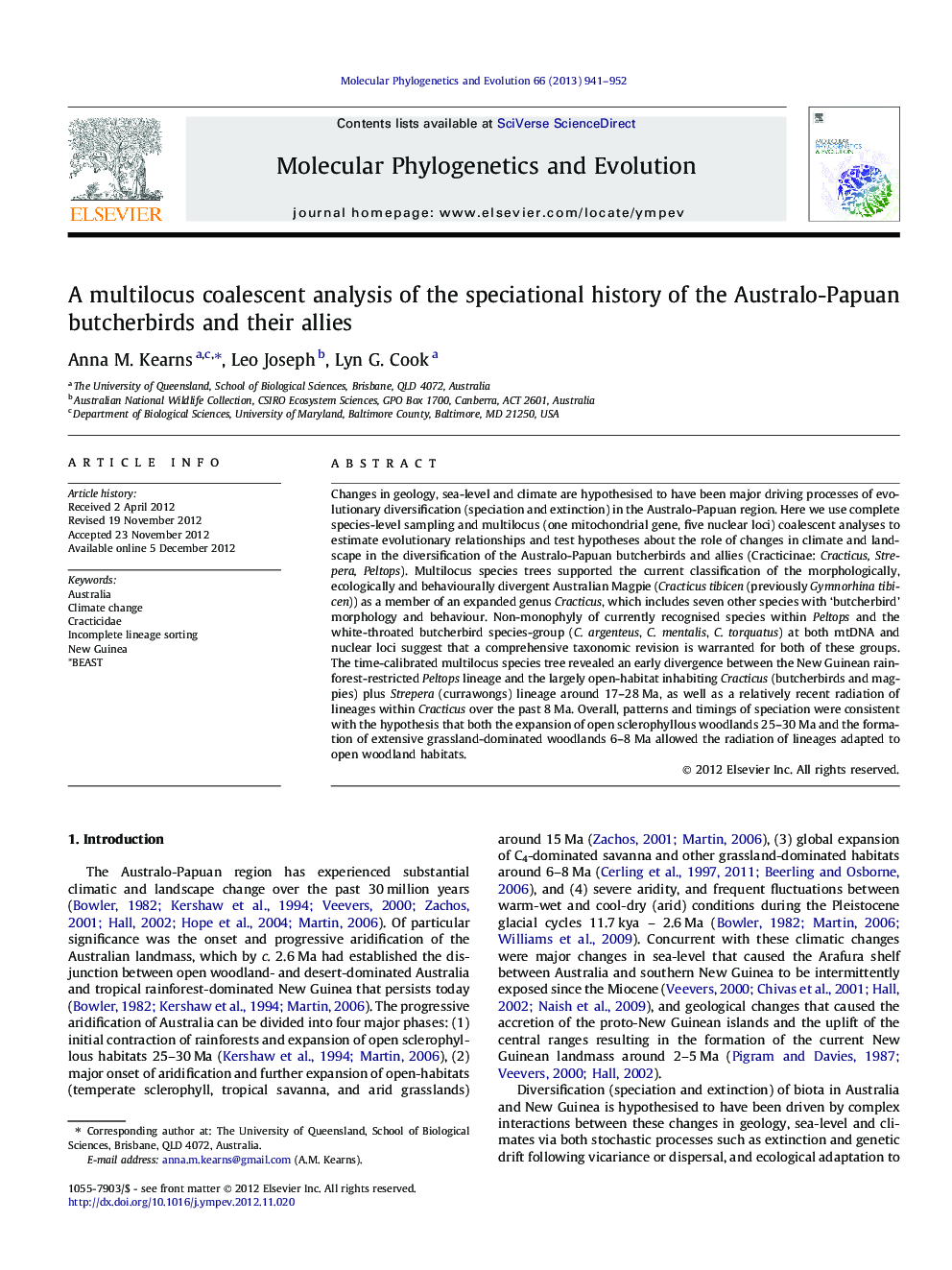| کد مقاله | کد نشریه | سال انتشار | مقاله انگلیسی | نسخه تمام متن |
|---|---|---|---|---|
| 2833963 | 1164275 | 2013 | 12 صفحه PDF | دانلود رایگان |

Changes in geology, sea-level and climate are hypothesised to have been major driving processes of evolutionary diversification (speciation and extinction) in the Australo-Papuan region. Here we use complete species-level sampling and multilocus (one mitochondrial gene, five nuclear loci) coalescent analyses to estimate evolutionary relationships and test hypotheses about the role of changes in climate and landscape in the diversification of the Australo-Papuan butcherbirds and allies (Cracticinae: Cracticus, Strepera, Peltops). Multilocus species trees supported the current classification of the morphologically, ecologically and behaviourally divergent Australian Magpie (Cracticus tibicen (previously Gymnorhina tibicen)) as a member of an expanded genus Cracticus, which includes seven other species with ‘butcherbird’ morphology and behaviour. Non-monophyly of currently recognised species within Peltops and the white-throated butcherbird species-group (C.argenteus, C.mentalis, C. torquatus) at both mtDNA and nuclear loci suggest that a comprehensive taxonomic revision is warranted for both of these groups. The time-calibrated multilocus species tree revealed an early divergence between the New Guinean rainforest-restricted Peltops lineage and the largely open-habitat inhabiting Cracticus (butcherbirds and magpies) plus Strepera (currawongs) lineage around 17–28 Ma, as well as a relatively recent radiation of lineages within Cracticus over the past 8 Ma. Overall, patterns and timings of speciation were consistent with the hypothesis that both the expansion of open sclerophyllous woodlands 25–30 Ma and the formation of extensive grassland-dominated woodlands 6–8 Ma allowed the radiation of lineages adapted to open woodland habitats.
Figure optionsDownload as PowerPoint slideHighlights
► We sequenced 1 mtDNA and 5 nuclear loci for all species in Cracticinae.
► MtDNA and nuclear loci do not support current species-limits in Peltops.
► Multilocus data place the Australian Magpie (ex-Gymnorhina) in Cracticus.
► ILS and hybridisation suspected as the cause of mtDNA paraphyly of C. argenteus.
► Impact of past climates on speciation was explored using time-calibrated species trees.
Journal: Molecular Phylogenetics and Evolution - Volume 66, Issue 3, March 2013, Pages 941–952